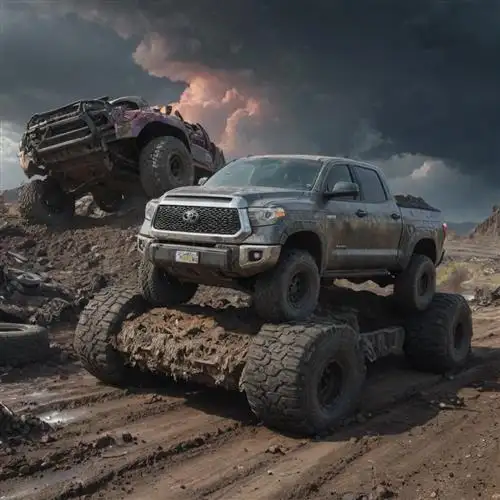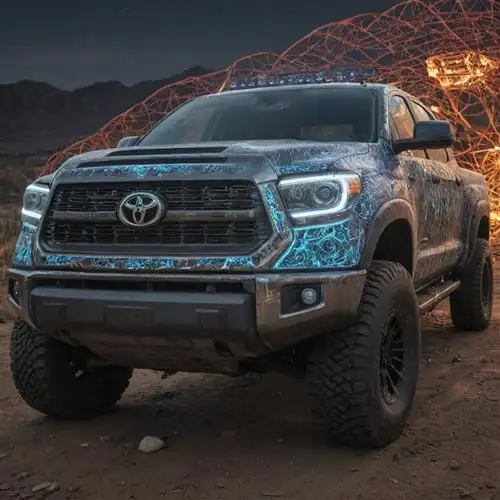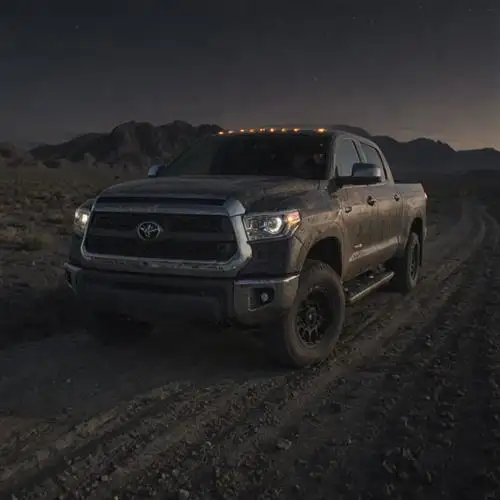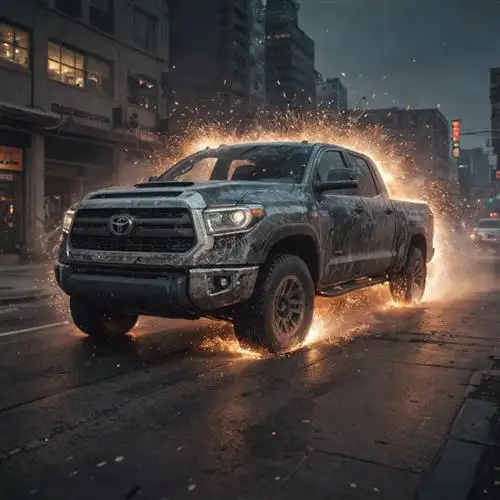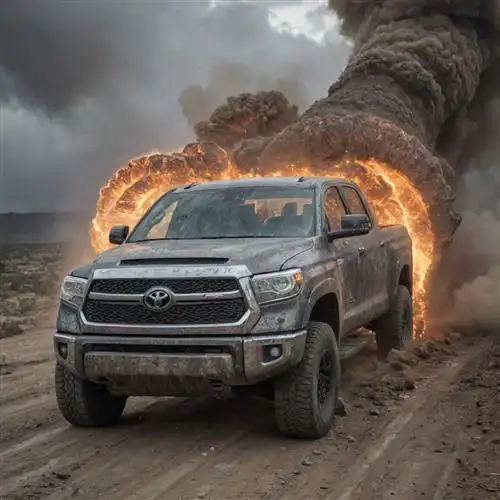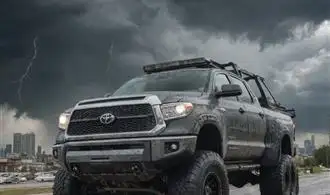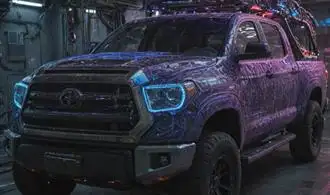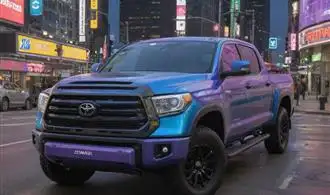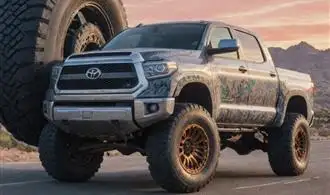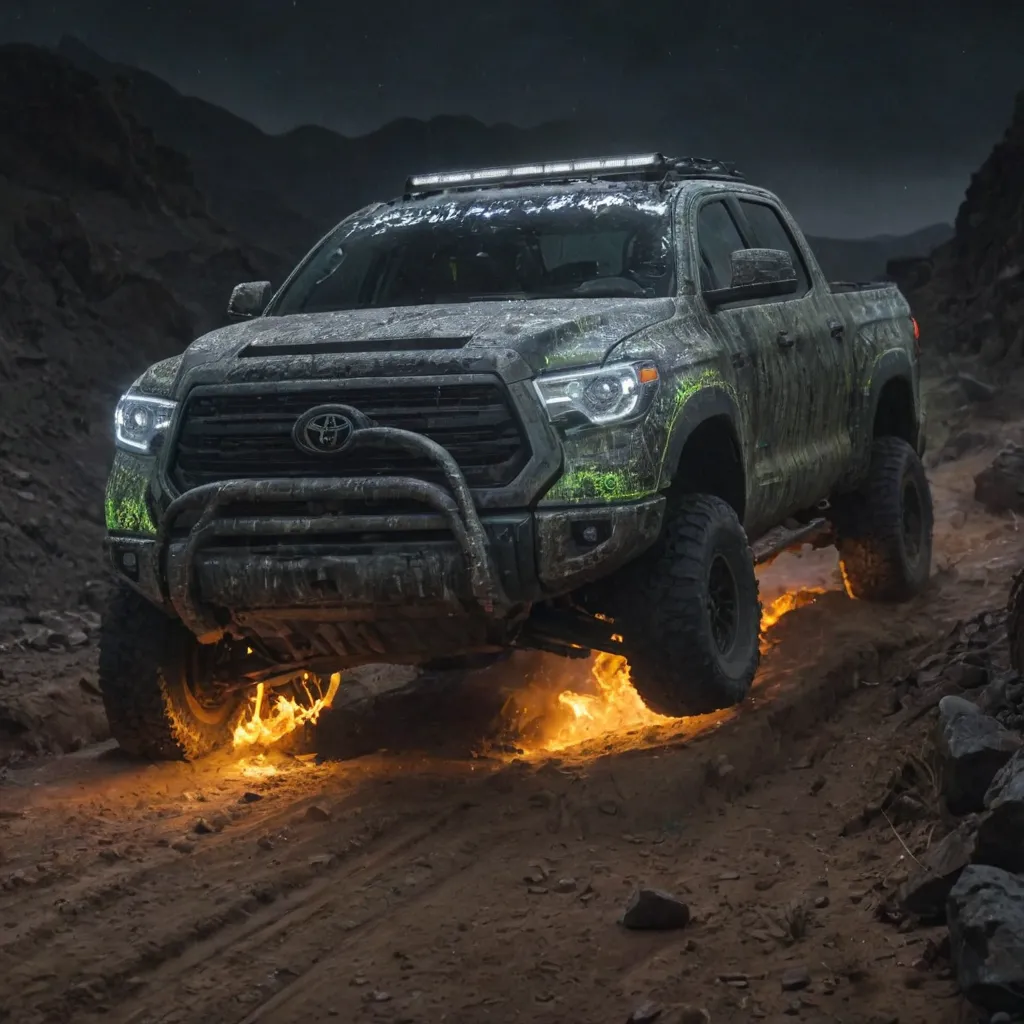
Cheap Aftermarket Tires
The Toyota Tundra is a rugged and capable pickup truck, but it's important to choose the right tires to ensure optimal performance and safety. While the temptation to save money by opting for cheap aftermarket tires may be strong, it's crucial to understand the risks and drawbacks of this decision. Cheap tires often compromise quality, safety, and longevity, which can ultimately cost you more in the long run.
One of the primary concerns with cheap aftermarket tires is their lack of durability. These tires are typically made with inferior materials and manufacturing processes, which can lead to premature wear and tear. This not only affects the ride quality and handling of your Tundra but also compromises your safety on the road. Cheap tires are more prone to blowouts, uneven tread wear, and other issues that can increase the risk of accidents.
Additionally, cheap aftermarket tires often fail to meet the same safety standards and performance specifications as the original equipment (OE) tires recommended by Toyota. This can result in decreased traction, longer braking distances, and reduced stability, especially in challenging driving conditions such as wet or icy roads. The reduced grip and handling capabilities can make your Tundra more difficult to control, putting you and other drivers at risk.
Furthermore, the use of cheap aftermarket tires may void your vehicle's warranty, as they may not be approved by Toyota for use on the Tundra. This can leave you responsible for any resulting damage or issues, which can be significantly more expensive than investing in high-quality tires from the start.
Unreliable Suspension Kits
When it comes to modifying your Toyota Tundra, suspension kits can be a tempting upgrade. However, not all suspension kits are created equal, and some can actually do more harm than good. Poorly designed or manufactured suspension kits can compromise the safety and performance of your vehicle, leading to a range of issues that can put you and your passengers at risk.
One of the primary concerns with unreliable suspension kits is their impact on the overall handling and stability of the Tundra. Inferior components, improper installation, or a lack of engineering can result in a suspension system that feels unstable, unpredictable, and even dangerous at higher speeds or during sudden maneuvers. This can lead to a loss of control, increased risk of accidents, and an overall decrease in the driving experience.
Additionally, low-quality suspension kits may not provide the level of durability and longevity that you would expect. Over time, these components can wear down more quickly, leading to increased maintenance costs, premature failure, and the need for expensive repairs. This can be particularly frustrating for Tundra owners who are looking to invest in upgrades that will enhance their vehicle's performance and longevity.
When evaluating suspension kits for your Toyota Tundra, it's essential to do your research and prioritize quality over cost. Look for reputable brands with a proven track record of engineering reliable and high-performing suspension systems. Consider consulting with experienced Tundra enthusiasts or professional mechanics to get their recommendations and insights on the best suspension kits for your specific needs and driving conditions.
Poorly Designed Grille Guards
When it comes to protecting your Toyota Tundra's front-end, a grille guard may seem like a practical investment. However, not all grille guards are created equal. Poorly designed grille guards can actually do more harm than good, compromising your vehicle's appearance, functionality, and even safety. In this section, we'll explore the pitfalls of poorly designed grille guards and why you should steer clear of them.
One of the most common issues with poorly designed grille guards is their impact on your Tundra's aesthetics. Cheap, ill-fitting grille guards can detract from the vehicle's sleek, rugged look, making it appear bulky and unattractive. These guards may not integrate seamlessly with the Tundra's existing design, resulting in a disjointed, aftermarket appearance that can be a significant turnoff for many owners.
Beyond the aesthetic concerns, poorly designed grille guards can also interfere with your Tundra's functionality. Ill-fitting guards may obstruct airflow to the engine, leading to reduced cooling efficiency and potentially causing overheating issues, especially during towing or off-road use. This can have a direct impact on your vehicle's performance and longevity.
Perhaps most importantly, poorly designed grille guards can compromise the safety of your Tundra and its occupants. Cheap, flimsy guards may not provide adequate protection in the event of a collision, potentially failing to absorb the impact and leaving your vehicle's front-end vulnerable. In the worst-case scenario, these guards could even contribute to increased damage or injury in an accident.
Ineffective Exterior Lighting Upgrades
When it comes to the Toyota Tundra, upgrading the exterior lighting can be a tempting proposition. However, not all lighting accessories are created equal. In this section, we'll explore some of the ineffective exterior lighting upgrades you should avoid for your Tundra.
Cheap LED Light Bars: While LED light bars can provide a striking visual upgrade, low-quality options can be a disappointment. These cheap light bars often produce an inconsistent, uneven beam pattern, failing to illuminate the road effectively. They may also suffer from poor build quality, leading to premature failures and unreliable performance.
Underpowered Fog Lights: Upgrading the fog lights on your Tundra can enhance visibility in inclement weather, but opting for underpowered or poorly designed units can do more harm than good. These subpar fog lights may fail to cut through the fog, leaving you with inadequate illumination and diminished safety.
Ill-Fitting Headlight Replacements: Replacing the headlights on your Tundra can be a tempting way to update the look, but poorly fitting aftermarket units can cause more problems than they solve. Improper fitment can lead to light leaks, uneven beam patterns, and even compromise the overall safety and functionality of your vehicle's lighting system.
Flashing or Pulsing Turn Signals: While some owners may find flashing or pulsing turn signals visually appealing, these modifications can be counterproductive. They can confuse other drivers on the road, potentially leading to increased risk of collisions. Stick to the factory-standard turn signal functionality for the safety of yourself and others.
Overlay Tinting: Applying a tint overlay to your Tundra's exterior lights may seem like a quick and easy way to customize the look, but it can significantly reduce the effectiveness of the lighting. The tint can diminish the brightness and clarity of the light output, compromising visibility and safety.
Flimsy Bed Covers and Liners
When it comes to accessories for your Toyota Tundra, one category you'll want to be wary of is bed covers and liners. These products may seem like a practical and convenient addition, but many options on the market are anything but durable. Cheap, flimsy bed covers and liners can quickly become more trouble than they're worth, compromising the functionality and appearance of your truck's bed.
Inferior bed covers, often made from thin, low-grade materials, are prone to sagging, warping, and even tearing over time. This can not only detract from the aesthetic appeal of your Tundra but also allow water, debris, and even pests to infiltrate the bed, potentially causing damage to your cargo. Similarly, low-quality bed liners may crack, peel, or become discolored, failing to provide the level of protection you need for your truck's bed.
When shopping for bed covers and liners, it's essential to prioritize quality and durability over cost. Look for options made from heavy-duty, weatherproof materials that are designed to withstand the rigors of daily use. Reputable brands like Tonneau and BedRug are known for producing top-of-the-line products that can stand up to the demands of a hardworking Tundra.
Cheap Replacement Parts
When it comes to Toyota Tundra accessories, one area that deserves special attention is the purchase of cheap replacement parts. While the temptation to save money may be strong, the long-term consequences of opting for subpar components can be far-reaching and costly. In this article, we'll explore why you should avoid cheap replacement parts for your Toyota Tundra and the potential risks associated with such purchases.
Cheap replacement parts, often sourced from unknown or questionable manufacturers, may seem like a bargain, but they frequently lack the quality and durability of genuine Toyota parts. These parts may not meet the same stringent safety and performance standards, putting your vehicle and your safety at risk. Additionally, the use of inferior parts can lead to premature wear and tear, increased maintenance costs, and even the potential for more serious mechanical failures down the road.
One of the primary concerns with cheap replacement parts is the risk of poor fit and compatibility. These parts may not be designed specifically for your Toyota Tundra model, leading to installation challenges, improper fit, and potential damage to surrounding components. This not only increases the time and effort required for installation but also raises the likelihood of future issues and the need for additional repairs.
Furthermore, the use of cheap replacement parts can have a negative impact on your vehicle's overall performance. Inferior components may not provide the same level of power, efficiency, or responsiveness as genuine Toyota parts, resulting in a less-than-optimal driving experience. This can be particularly problematic for critical systems, such as brakes or suspension, where the quality and reliability of the parts can directly affect the safety and handling of your Toyota Tundra.
Another important consideration is the potential for voiding your vehicle's warranty. Many Toyota dealerships and authorized repair centers will not honor warranty claims if they determine that the issue was caused by the use of non-genuine parts. This means that any savings you may have initially realized from purchasing cheap replacement parts could be quickly erased by the cost of future repairs or the loss of warranty coverage.
Poorly Designed Winch Mounts
When it comes to accessorizing your Toyota Tundra, the winch mount is a critical component that often gets overlooked. Poorly designed winch mounts can not only compromise the functionality of your winch but also put your safety at risk. In this section, we'll dive deep into the common issues associated with subpar winch mounts and why you should avoid them.
Firstly, a poorly designed winch mount may lack the necessary strength and structural integrity to support the weight and pulling force of your winch. This can lead to dangerous situations where the mount may fail under load, causing the winch to detach or even damage your vehicle. Inferior materials or improper mounting can result in a mount that simply cannot handle the demands of off-road use or heavy-duty recovery operations.
Another critical concern with poorly designed winch mounts is the potential for misalignment. If the mount is not precisely engineered to fit your Tundra's frame and positioning, the winch may not be properly aligned with the vehicle's centerline. This misalignment can create uneven stress on the mount, leading to premature wear and tear, and even the possibility of the winch becoming dislodged during use.
Furthermore, a poorly designed winch mount may not provide adequate clearance for the winch's moving parts, such as the spool and cable. Insufficient clearance can result in the cable becoming snagged or the winch components interfering with other vehicle components, potentially causing damage or even preventing the winch from functioning correctly.
In addition, low-quality winch mounts may not integrate well with your Tundra's existing bumper or grille design, leading to a less-than-seamless appearance and potentially compromising the overall aesthetic of your vehicle. This can be particularly frustrating for owners who invest time and effort into creating a cohesive, off-road-ready look for their Tundra.
Unreliable Off-Road Accessories
When it comes to accessorizing your Toyota Tundra for off-road adventures, it's crucial to choose your upgrades wisely. While the allure of bold, rugged aftermarket parts may be tempting, some are simply not worth the investment. In this section, we'll explore the pitfalls of several off-road accessories that often disappoint Tundra owners, helping you make informed decisions and avoid costly mistakes.
Cheap Lift Kits: Not all lift kits are created equal, and the old adage "you get what you pay for" certainly applies here. Opting for the cheapest lift kit may seem like a budget-friendly solution, but these low-quality components can lead to a host of problems, from premature wear and tear to instability and poor handling. If you're serious about improving your Tundra's off-road capabilities, it's worth investing in a high-quality lift kit from a reputable manufacturer.
Knock-Off Bull Bars: While bull bars can provide an attractive, rugged look and offer some protection for your Tundra's front end, cheap imitations often compromise on safety and durability. These knock-off accessories may not meet safety standards, putting your vehicle and occupants at risk in the event of a collision. Stick to trusted brands that prioritize quality and safety, even if it means a higher price tag.
Inferior Recovery Gear: When you're navigating challenging off-road terrain, reliable recovery gear is essential. Inexpensive tow straps, winches, and other recovery equipment may seem like a bargain, but they are more likely to fail when you need them most. Invest in high-quality recovery gear from reputable manufacturers to ensure your Tundra can be safely extracted from even the toughest situations.
Flimsy Skid Plates: Protecting the underbelly of your Tundra is crucial for off-road excursions, but cheap skid plates often fail to provide the necessary protection. These lightweight, low-quality parts can easily become damaged or dislodged, leaving your vehicle's vital components exposed to rocks, debris, and other hazards. Choose skid plates that are made from sturdy, durable materials to safeguard your Tundra's delicate components.

